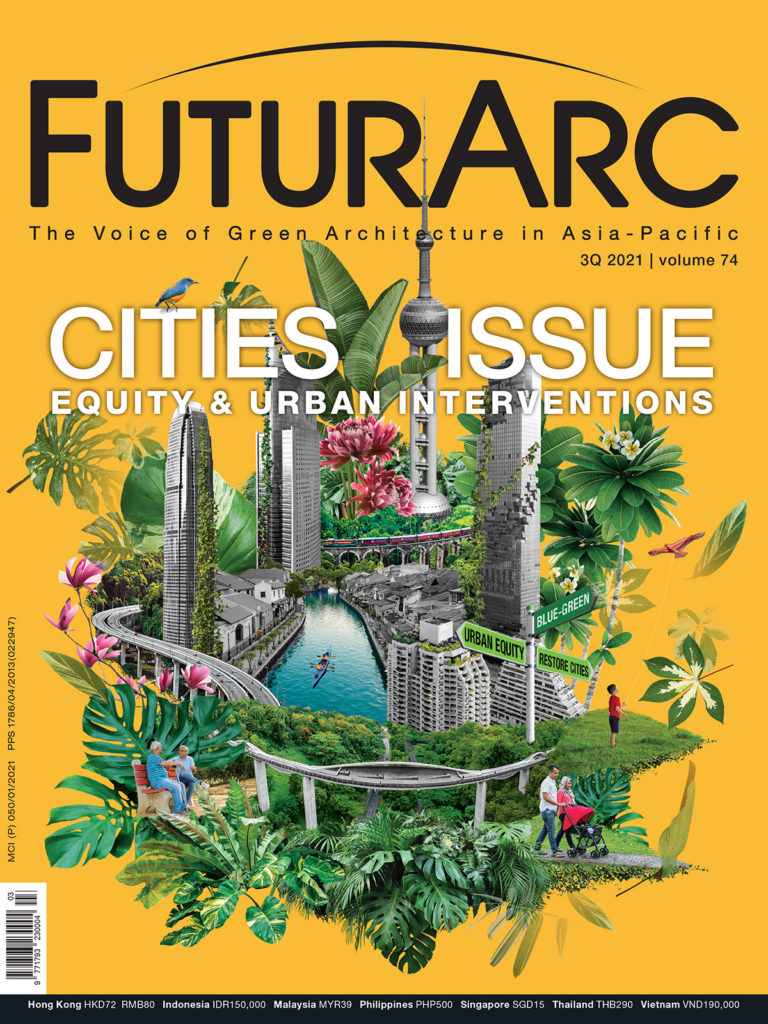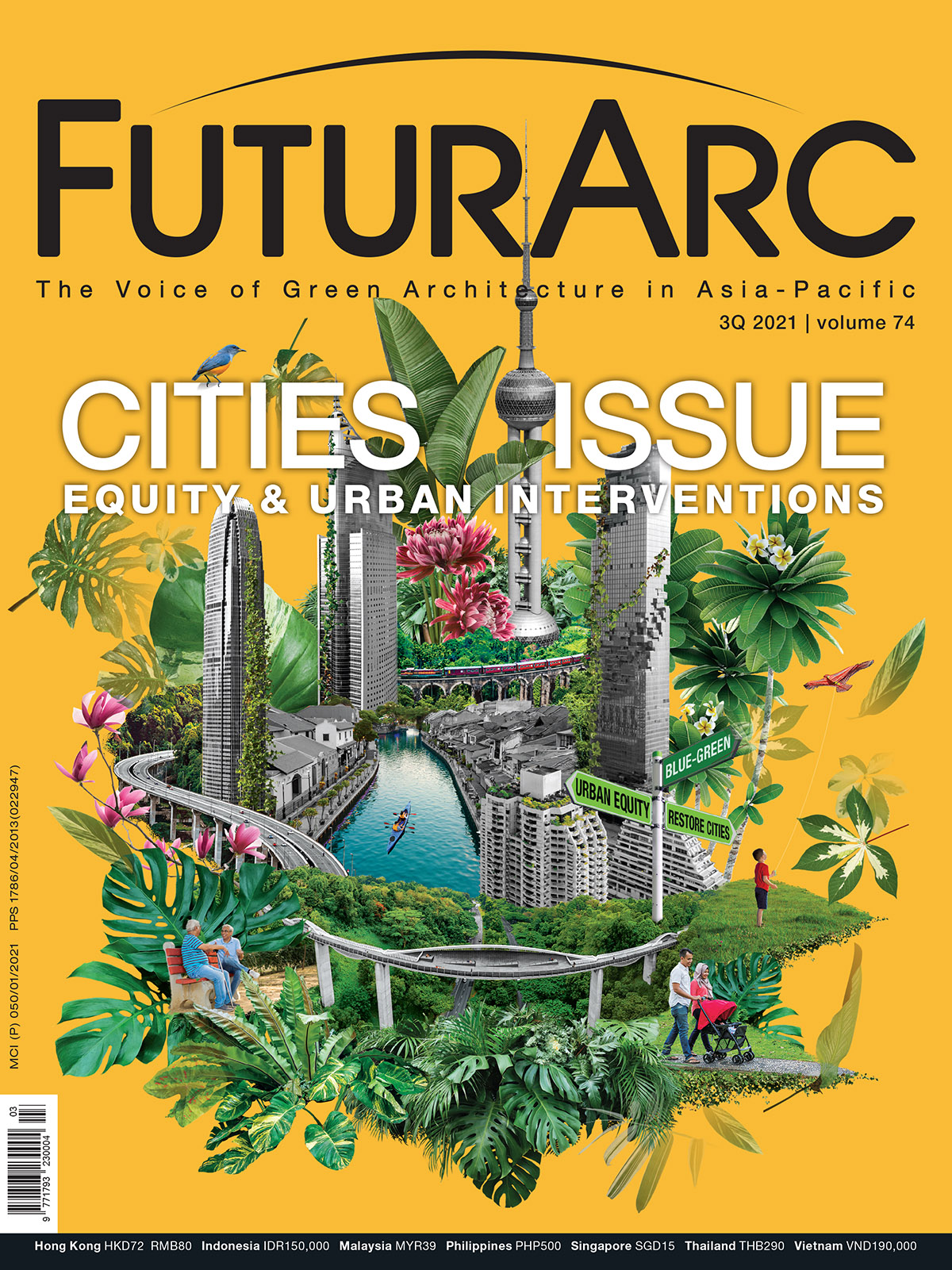Equity and Urban Interventions
Dear FuturArc Readers,
There was a quote that I came across while doing this edition that moved me. “We don’t move through time, time moves through us.”
Sarah Lynn Rees, who spoke at the Living Cities Forum organised in Australia, shared this anecdotal quote told to her by an elder in her community—she is a descendant of the Plangermaireener and Trawlwoolway people of North-East Tasmania. She talked about the role of indigenous knowledge systems for creating an inclusive, sustainable built environment.
And as time moves through the making of this Cities issue, we see how it has played out as an underlying narrative in the stories covered. The tensions cities face that emerged from the inevitable tide of change—changes in climate; distribution of resources; geographical and physical landscapes; as well as urban fabric.
Dzung Do Nguyen (urban planner; CEO of enCity), Heather Banerd (urban and landscape designer), and Milinda Pathiraja (Co-founder of RAW) wrote a critique on Hoi An and Kandy respectively—about how these two World Heritage cities are struggling to balance the demand for development with preserving its natural and cultural assets; each having to contend with ‘urban progress’ against the backdrop of ecological resources intersecting with their colonial past and the crises-ridden present.
With a panel of professionals: Dr Yayat Supriatna (urban observer and lecturer); Sacha Schwarzkopf (Director at AECOM); Daniel Lim and Gan Yi Reng (placemaking experts from Think City), we discussed extensively issues of equity and how different urban interventions and solutions could address them now. Principal and Founding Partner of People’s Architecture Office James Shen’s Plugin systems, which have developed into several permutations as an answer to cities’ call for solutions, could serve as a way to literally connect the old with the new with little time and minimal wastage.
An indicator of a well-designed, well-planned city is by measure of its walkability—Richard Lambert, an expert in the field, discoursed at length on why Asian cities, which were historically designed for walking, need to bring back more walkable streets now. We also look at future and present projects that attempt to foster ties with city dwellers by their intent, impact and function.
Going back to where I began, in the same forum, Anupama Kundoo, India-born and Berlin-based architect, made a case for slow architecture—looking at time as a resource—saying, “There is nothing so useless as doing efficiently that which should not be done at all.”
In today’s climate, where most cities are hard hit by natural or man-made disasters, and with the disadvantaged or marginalised bearing the brunt of such blows, have we stopped to consider if what we are doing is effective and necessary or useless and excessive?
Drop us an email to let us know what you think.
Candice Lim
Editor-in-Chief
Table of Contents
1Q 2024: HEALTH/WELLNESS
Previous issues:
⠀
4Q 2023: YEAR-END ISSUE | WATER
⠀
3Q 2023: GREEN AWARDS | CROSS-GENERATIONAL ARCHITECTURE
⠀
2Q 2023: OLD IS GOLD
⠀
1Q 2023: MOBILITY & TRANSPORT
⠀
4Q 2022: YEAR-END ISSUE | POLICY VS PRACTICALITY, PRACTICE VS PRINCIPLES, PROGRESS VS PLANET
3Q 2022: GREEN AWARDS | REINTERPRETATION
2Q 2022: NEW & RE-EMERGING ARCHITECTURE
1Q 2022: HOUSING ASIA
To read the complete article, get your hardcopy at our online shop/newsstands/major bookstores; subscribe to FuturArc or download the FuturArc App to read the issues!



